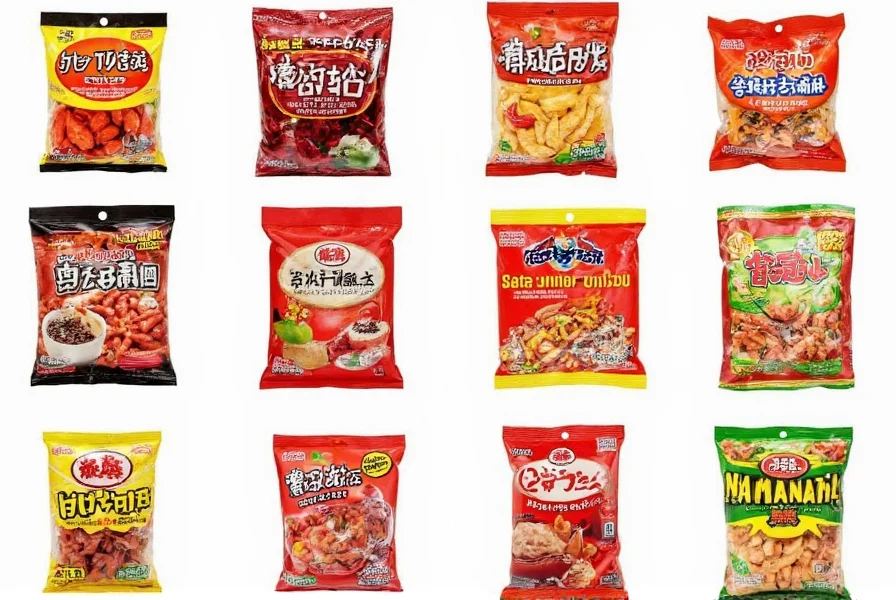For candy lovers exploring global flavor profiles, chili chews represent an exciting intersection of traditional gummy candy with bold spicy elements. Unlike standard gummy bears, these treats deliver a multi-layered sensory experience that has captured attention across snack markets worldwide.
Understanding Chili Chews: More Than Just Spicy Candy
Chili chews belong to the broader category of flavored gummy candies but distinguish themselves through their signature heat component. The "chili" in their name refers not to ground chili powder but typically to chili extract or capsaicin-infused flavoring that creates that characteristic warming sensation. Manufacturers carefully balance sugar, citric acid for sourness, and chili compounds to achieve the distinctive flavor progression these candies are known for.
Most chili chews maintain the same gelatin-based chewy texture as traditional gummy candies, though vegan alternatives using pectin or agar have become increasingly available. The texture allows for slow flavor release, which enhances the experience as the initial sweetness gradually gives way to tanginess and finally the spicy finish.

Origin and Global Popularity
While gummy candies originated in Germany, the chili-infused variation emerged from Asian candy markets where sweet-spicy flavor combinations have deep culinary roots. Thailand, Japan, and the Philippines developed some of the earliest commercial versions of chili chews, drawing inspiration from traditional snacks that blend fruit, sugar, and chili.
These spicy gummy treats gained international recognition through Asian grocery stores and specialty candy retailers. Today, they've evolved beyond their regional origins to become mainstream offerings in many Western markets, with major confectionery companies developing their own interpretations of sweet sour spicy candy.
Flavor Profile Breakdown
What makes chili chews stand out is their carefully engineered flavor progression:
| Flavor Stage | Primary Components | Sensory Experience |
|---|---|---|
| Initial Sweetness | Sugar, fruit flavors | Bright, familiar candy sweetness |
| Middle Sourness | Citric acid, malic acid | Tangy sensation that prepares palate for heat |
| Spicy Finish | Chili extract, capsaicin | Gradual warming sensation that builds then fades |
This three-stage flavor journey creates what candy enthusiasts call the "flavor rollercoaster" effect, making each piece an engaging experience rather than a one-note sweet treat. The heat level varies significantly between brands, with some offering mild warmth suitable for beginners and others delivering intense spice for experienced chili candy consumers.
Different Types of Chili Chews
Not all spicy gummy candies follow the same formula. The market offers several variations:
- Traditional chili chews - Gummy bears or worms with moderate heat levels
- Fruit-chili combinations - Mango-chili, lychee-chili, or tamarind-chili blends
- Extreme heat varieties - Designed for spice enthusiasts with higher capsaicin content
- Vegan alternatives - Made without gelatin using plant-based gelling agents
- Sugar-free options - Using alternative sweeteners for dietary considerations
Asian gummy treats often incorporate regional flavors like yuzu-chili or sakura-chili, while Western adaptations might feature jalapeño-infused gummies or habanero-spiced varieties. The diversity in Asian candy flavors continues to expand as manufacturers experiment with different chili varieties and fruit pairings.

How Chili Chews Compare to Similar Products
While chili chews share characteristics with other candies, they occupy a distinct niche:
- Regular gummy bears - Lack the spicy component, offering only sweet and sometimes sour flavors
- Sour patch kids - Focus on sweet-sour contrast without the spicy finish
- Chili-lime candies - Often hard candies with powdered coatings rather than chewy texture
- Spicy chocolate - Combines heat with cocoa rather than gummy candy base
The chewy texture of chili chews allows for slower flavor release compared to hard candies, creating a more prolonged sensory experience. This makes them particularly appealing to those who enjoy savoring their snacks rather than consuming them quickly.
Cultural Significance and Consumption Patterns
In countries where chili chews originated, they're more than just candy—they're part of a broader culinary tradition that embraces sweet-spicy combinations. In Thai cuisine, for example, this flavor profile appears in dishes like pad kra pao and various dipping sauces. The candy adaptation makes this complex flavor profile accessible in a convenient, shelf-stable format.
Consumption patterns vary by region. In Asia, chili chews often serve as everyday snacks enjoyed by all age groups. In Western markets, they've gained particular popularity among adventurous eaters and those seeking alternatives to standard sweet candies. Some consumers appreciate them as palate cleansers between food courses, while others enjoy them as standalone treats.
How to Enjoy Chili Chews
For those new to spicy gummy treats, here are some recommendations:
- Start with milder varieties before progressing to hotter options
- Pair with cold beverages to balance the heat if needed
- Try them alongside complementary flavors like coconut or mango
- Use as creative cocktail garnishes for adventurous mixology
- Experiment with incorporating small pieces into dessert recipes
Many enthusiasts recommend letting the candy sit on your tongue rather than chewing immediately to experience the full flavor progression. The gradual build of heat creates a more nuanced experience than immediate spiciness.
Frequently Asked Questions About Chili Chews
Are chili chews actually spicy like real chili peppers?
Chili chews contain chili extract but at much lower concentrations than fresh chili peppers. The heat builds gradually and is significantly milder than eating actual chili peppers. Most varieties offer a warming sensation rather than intense burning, though extreme varieties can deliver noticeable heat.
What makes chili chews different from regular gummy bears?
While both share a similar chewy texture, chili chews incorporate chili extract that creates a distinctive flavor progression: starting sweet, turning sour, and finishing with a spicy kick. Regular gummy bears typically offer only sweet or sweet-sour flavor profiles without the spicy component that defines chili chews.
Are there vegan options for chili chews?
Yes, many manufacturers now offer vegan chili chews made with pectin or agar instead of gelatin. These plant-based alternatives maintain the chewy texture while catering to dietary preferences. Check packaging for vegan certification or ingredient lists that specify plant-based gelling agents.
How long do chili chews stay fresh?
Properly stored in a cool, dry place away from direct sunlight, most chili chews maintain optimal texture and flavor for 6-12 months. The shelf life depends on specific ingredients and packaging. Once opened, consume within 2-4 weeks for best quality, as exposure to air can cause them to harden over time.
Can children safely eat chili chews?
Most standard chili chews contain mild heat levels suitable for older children, but parents should exercise caution with younger children. The spicy component may be overwhelming for undeveloped palates. Always check age recommendations on packaging, and supervise children's consumption of spicy candies to ensure they can handle the heat level.











 浙公网安备
33010002000092号
浙公网安备
33010002000092号 浙B2-20120091-4
浙B2-20120091-4